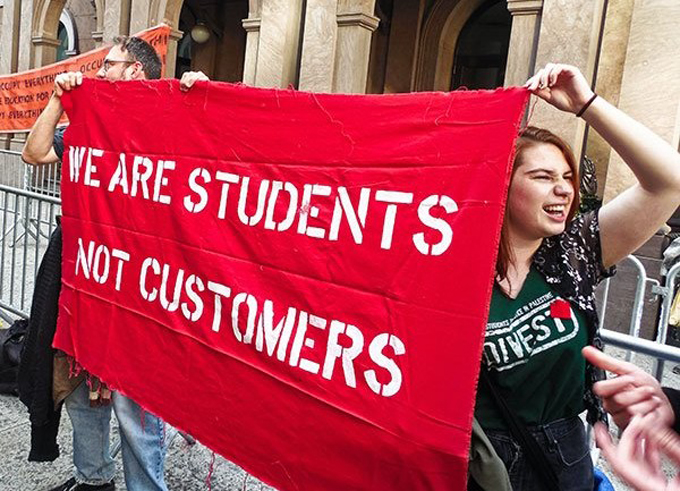Should Higher Education Be Merchandised?
 Like it or not, the business model of higher education is firmly in place across America. Students are indeed customers. The important thing is to make money. If students and parents are happy with their purchases, then what else is there?
Like it or not, the business model of higher education is firmly in place across America. Students are indeed customers. The important thing is to make money. If students and parents are happy with their purchases, then what else is there?
Of course, quality is in the eye of the beholder. You buy goods at Walmart because they look good and they’re affordable. Engineers are busy across America and China attempting to manufacture goods that look durable but are low-cost. Who cares if education isn’t deeply rooted so long as it is cheap enough.
In his recent article “Costumer Mentality” college professor Nate Kreuter finds five obvious parallels between higher education today and the marketplace, America’s preferred venue for personal renewal:
* We woo students with slick advertising.
* We extend these student-customers an astounding amount of easy credit.
* We turn universities into brands.
* We focus on growth for growth’s sake.
* We vocationalize higher education.
As with Disney’s theme parks, kids are having lots of fun while being reminded of historical settings to learn from. As with going to church, few really want a test at the end of the day, do they? Might be embarrassing. Kreuter points out that higher education is decidedly locked into short-term goals: “The student-as-customer model, because it is premised upon unsustainable growth and unsecured debt, and government abandonment of its responsibilities, is the human equivalent of strip-mining.”
Faculty are responsible only to the goal of making money, he says, while learning is made to appeal to the five senses. Government assembly lines keep the diploma mills as state of the art as possible:
Off campus, the same logic of student-as-customer cultivates another set of similarly alarming impulses. The mentality treats academic coursework as standardized parts within a Fordian, standardized academic assembly line. The metaphor drives legislation that treats universities as wayward corporations, rather than as the public infrastructure necessary to sustain a vital democracy.
If there’s an upside to thinking of students as customers, I think it is that the model reminds us that we and our universities are directly accountable to students. Ours is a role of service, direct service to the students we enroll, and indirect service to the society those students will populate and some day run. We are accountable to manage university resources — human, financial, and other — around the primary mission of providing education. We are and ought to be accountable to students and to taxpayers. But the student-as-customer model makes us accountable to the wrong values, to purely financial motives, and at the neglect of the many idealistic, ethical, and democratic motives for expanding access to higher education.
 Like it or not, the business model of higher education is firmly in place across America. Students are indeed customers. The important thing is to make money. If students and parents are happy with their purchases, then what else is there?
Like it or not, the business model of higher education is firmly in place across America. Students are indeed customers. The important thing is to make money. If students and parents are happy with their purchases, then what else is there?